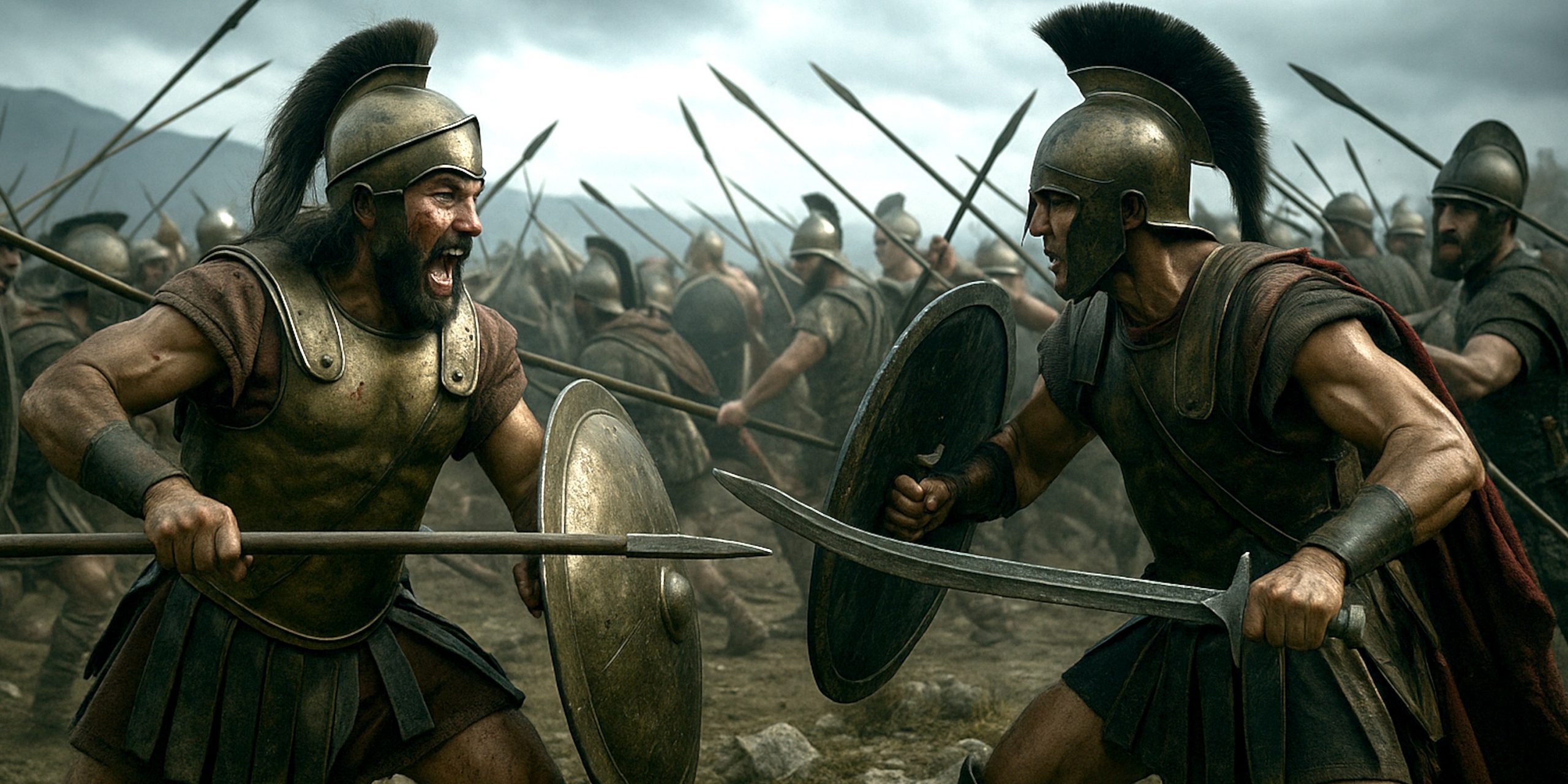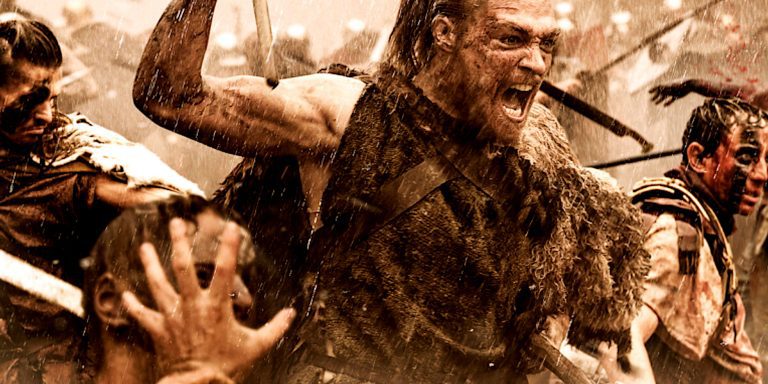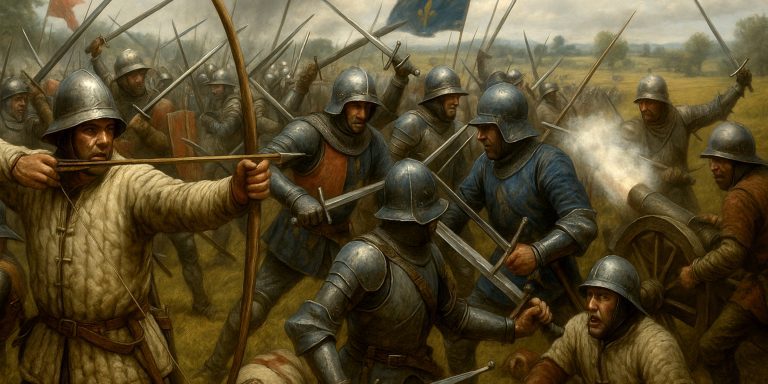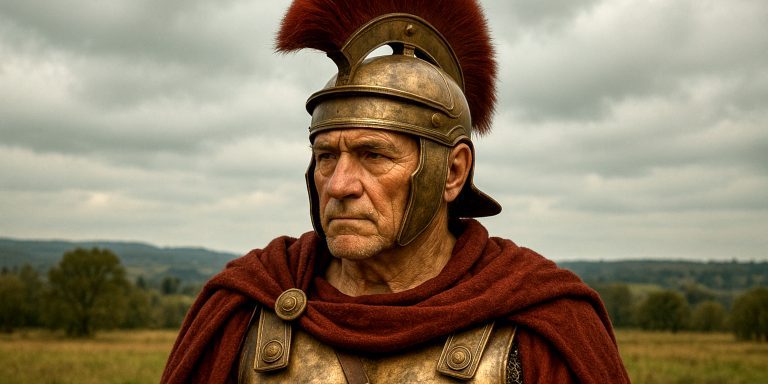
The Battle of Amphipolis, fought in 422 BC, stands as one of the most dramatic and decisive engagements of the Peloponnesian War. It was a confrontation between Athens and Sparta that turned on bold leadership, bad timing, and a sense of tragic irony. Both commanding generals, Brasidas for Sparta and Cleon for Athens, fell in battle, leaving their cities without two of their most dynamic, if divisive, figures.
It is one of those battles where everyone involved thought they were being clever, yet history recorded only their miscalculations.
Background
Amphipolis was not just a city; it was a prize. Located near the Strymon River in Thrace, the settlement commanded vital routes to timber, gold, and silver. The Athenians had founded it as a colony decades earlier, but its loyalties were always uneasy. When Brasidas captured it in 424 BC through diplomacy and daring rather than brute force, it was a blow Athens could never quite forgive.
Two years later, Cleon, the populist general and politician, decided to restore Athenian honour. He led a force north to retake the city, expecting an easy victory. Brasidas, meanwhile, waited behind Amphipolis’ walls with a smaller but disciplined army of Spartans and local allies.
Forces
| Side | Leader | Estimated Troops | Composition | Allies |
|---|---|---|---|---|
| Athens | Cleon | Approx. 3,000–4,000 | Hoplites, light infantry (peltasts), and a small cavalry contingent | Thracian auxiliaries |
| Sparta | Brasidas | Approx. 2,000–2,500 | Spartan hoplites, allied hoplites, light troops, cavalry | Local allies from Amphipolis and the Chalcidice region |
Cleon’s army outnumbered Brasidas’, but it lacked cohesion. Many of his men were untested, and his command was undermined by Athenian politics. Brasidas, by contrast, had hardened veterans who had served under him in daring northern campaigns.
Arms and Armour
Both armies were equipped in the typical fashion of the late 5th century BC, but regional differences gave some flavour to the encounter.
Athenian Forces:
- Primary weapon: Dory (spear of around 2.4 metres)
- Secondary weapon: Xiphos (short, double-edged sword used for close combat)
- Armour: Bronze thorax, aspis (round shield), greaves, Corinthian-style helmet
- Light infantry: Peltasts armed with javelins and small crescent shields (pelte)
Spartan and Allied Forces:
- Primary weapon: Dory (spear), often reinforced with sturdier shafts
- Secondary weapon: Kopis (a forward-curving blade ideal for slashing)
- Armour: Bronze cuirass, aspis, open-faced helmets allowing greater visibility
- Cavalry and Thracian allies: Used machaira and javelins, adding mobility to Brasidas’ tactics
In a sense, this was a battle between the textbook Athenian hoplite and the more practical Spartan field commander who understood when not to fight by the book.
The Battle
Cleon advanced cautiously toward Amphipolis, uncertain whether Brasidas would meet him in open battle. When the Spartan commander finally emerged, he did so with unorthodox aggression.
Brasidas struck from the city gates with a swift flanking manoeuvre, while his subordinate Clearidas led another detachment in a frontal assault. Cleon’s troops, caught between regrouping and retreating, fell into disorder.
Thucydides, who was stationed nearby (and would later record the event with some embarrassment), noted:
“Cleon, seeing his men giving ground, turned to flee and was struck down by a Thracian.”
Brasidas was wounded in the first charge but lived long enough to hear that his side had won. Both leaders’ deaths ended the campaign in mutual exhaustion, and within a year, Athens and Sparta signed the Peace of Nicias.
Battle Timeline
| Time | Event |
|---|---|
| Morning | Cleon’s forces approach Amphipolis cautiously. Scouts report limited Spartan movement. |
| Late morning | Brasidas launches a sudden sortie from the north gate, surprising the Athenian line. |
| Midday | Clearidas’ contingent strikes from another gate, causing panic among the Athenians. |
| Afternoon | Cleon is killed during the retreat; Athenian line collapses. |
| Evening | Spartans secure the field. Brasidas, mortally wounded, is carried into the city where he dies shortly after. Amphipolis honours him as a hero. |
Archaeology
Archaeological work at Amphipolis has revealed substantial fortifications from the classical period, lending weight to accounts of its strong defences. The city’s acropolis and walls, built with local marble and limestone, show evidence of repairs dating to the Peloponnesian War era.
In 2014, the discovery of the Kasta Tomb near Amphipolis renewed public fascination with the site. Though not directly linked to the battle, it reinforced the city’s status as one of northern Greece’s richest archaeological zones.
Excavations have also recovered bronze spearheads, iron sword fragments, and arrowheads, typical of hoplite warfare. Some scholars suggest these could relate to the battle’s aftermath or subsequent military occupation.
Contemporary Accounts
The main narrative comes from Thucydides, who, with his typical dry detachment, admits his failure to save Amphipolis while providing one of the war’s most vivid tactical descriptions. His tone implies a certain professional admiration for Brasidas’ decisiveness.
Another fragment from the orator Lysias later describes Brasidas as:
“A man who conquered more by daring than by numbers.”
A fitting epitaph for a general who saw opportunity where others saw ruin.
Legacy
The Battle of Amphipolis is often viewed as a tragic climax of the Peloponnesian War’s first phase. Both cities lost men of rare initiative, and with their deaths came a brief peace that satisfied no one.
Cleon’s end symbolised the fall of Athenian demagoguery; Brasidas’ death robbed Sparta of its most imaginative commander. Amphipolis itself remained under Spartan control for several years, a lasting reminder that intelligence and boldness sometimes outweigh size and numbers, until, of course, both generals end up dead.
As a historian, one can’t help but admire the irony: a battle where both sides technically won the argument but lost the war of common sense.
References to See Today
Visitors to Amphipolis (modern Amfipoli) can explore:
- The ancient city walls and acropolis overlooking the Strymon.
- The Lion of Amphipolis, a monumental sculpture believed to commemorate Brasidas.
- The Archaeological Museum of Amphipolis, which houses artefacts from the site including hoplite armour and grave offerings.
The Seven Swords Takeaway
The Battle of Amphipolis is not remembered for its scale but for its symmetry, a tragic duel between two generals whose reputations were as volatile as their tempers. It is a rare moment in ancient warfare where bravery and recklessness met, shook hands, and promptly killed each other.
Watch the documentary:



